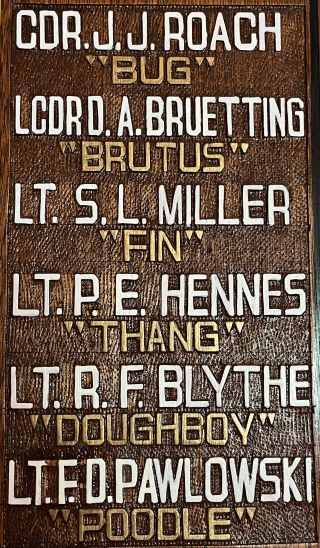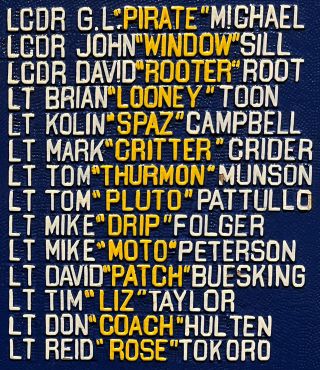Psychology
The Psychology of the Call Sign
An important military aviation rite.
Updated September 2, 2023 Reviewed by Gary Drevitch

The origin of aviator call signs is murky, even to military historians. But all agree that it is an important and hallmark feature of military aviation, one that promotes unit cohesion, a sense of belonging and simultaneous humility and pride; it's also an important prophylactic to stress.
Naval and Marine Corps aviation is a serious business. Think about the missions of tactical aircraft, the dangerous places they fly, and the grave responsibility of their national security function, and you might think that call signs are a serious business too. They are, but maybe not in the way you think. They aren’t given with the intention to make cool people any cooler than they already are. While intentional or not, they serve to ground these same people, while strengthening interpersonal relationships in a squadron. Rites and rituals specific to a group of people help to strengthen the bonds between them. And, frankly, it’s hard not to have a great day at work when your co-workers sport such names as Sunshine, Terror, Quad, Rainbow, Meth (short for Methuselah, not methamphetamine), Hamburgler, Sparky, Chunks (airsickness can be epic), WEPOP, and Smurfette.
Call signs revolve around humor (an effective coping strategy in a high-risk environment) and humility (a necessary trait for flight personnel). A call sign may make a joke out of a last name, a personality trait, or a physical attribute, but in the best case (at least for an aviator’s peers), the individual has done something truly embarrassing, because that is the finest fodder for a call sign. Healthy aviators and flight officers are able to embrace what others might perceive as an embarrassing call sign, making it a part of their identity and essentially owning it.
Take WEPOP (pronounced Wee-Pop). It isn’t uncommon to take an event and immortalize it with an acronym. WEPOP, or Will Eat Pizza Off Pavement, is a good example. Yes, it landed upside down. And yes, he ended up with some unintentional gravel to spice it up and add a bit of texture. And no, he’s not sorry about doing it (he was quite hungry), or having to tell this story on a regular basis for the rest of his life when people ask how he got his call sign.
In the aviation community, it is important that you can openly discuss your foibles, that you aren’t afraid to take risks, and that you are willing to let everyone analyze your decisions. Your peers are as responsible for your flight safety as you are for theirs, which means that communication has to flow freely, even if you’ve made a mistake or are unsure what action to take. Because of the need for effective crew coordination and teamwork, aviation requires a good deal of socialization and openness, because those squadrons with tighter bonds are safer and more successful. Call signs are an integral part of this culture and a tool to help form these necessary bonds.

Call signs aren’t given indiscriminately. Members of a squadron will make suggestions and vote via a Call Sign Review Board, but ultimately it is the Commanding Officer who makes the decision, ensuring call signs are both worthy and appropriate. It is important to know that individuals have no say in their call sign. Call signs are bestowed, never self-anointed. Call signs are earned; peers are the primary determining factor; and it becomes a significant and meaningful part of an individual’s identity for the rest of their life.


